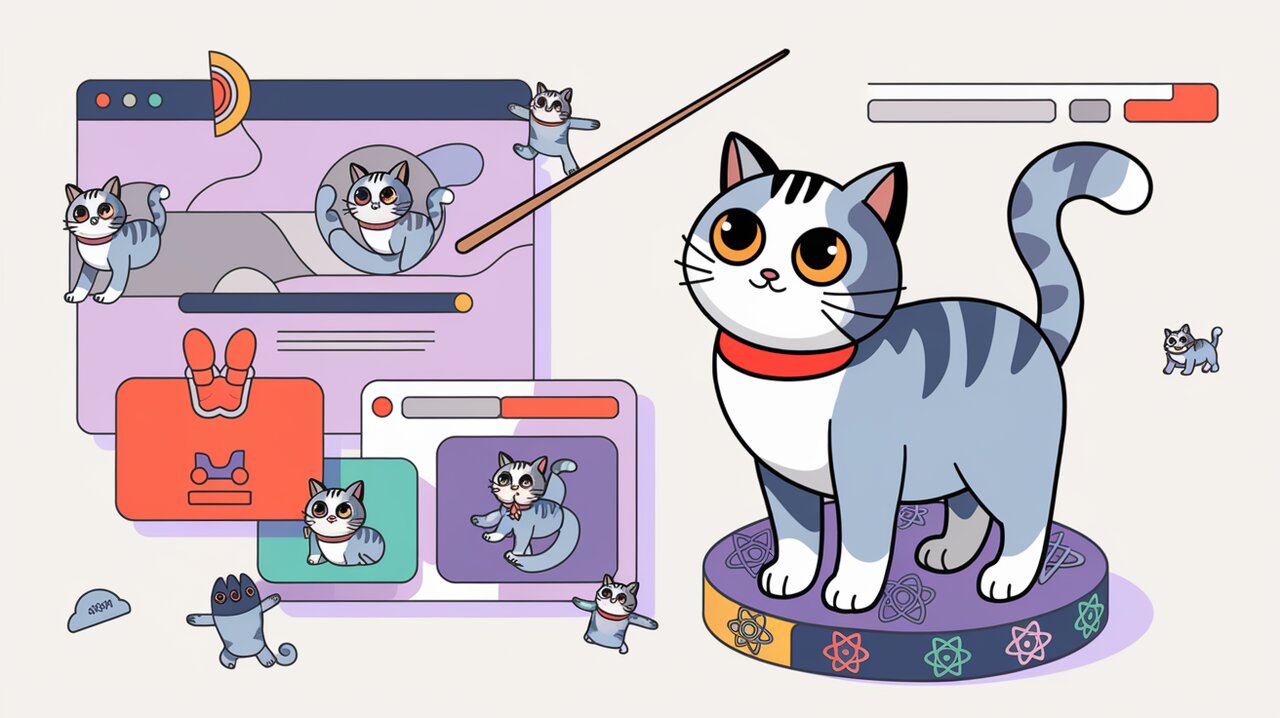
Unleash Lottie Magic: React Animation Wizardry with react-lottie-player
In the ever-evolving landscape of web development, creating engaging and interactive user interfaces is paramount. Enter Lottie animations – a powerful tool that brings vector animations to life in your React applications. Today, we’ll dive deep into the react-lottie-player library, a robust solution for implementing Lottie animations in React with ease and flexibility.
What is Lottie and Why Should You Care?
Lottie is an open-source animation file format that allows you to ship animations as easily as shipping static assets. It enables designers to create and ship beautiful animations without engineers having to manually recreate them by hand. These animations are small files that work on any device and can scale up or down without pixelation.
Introducing react-lottie-player
The react-lottie-player library is a fully declarative React component for Lottie animations. It offers seamless integration, excellent performance, and a straightforward API. Let’s explore how to harness its power in your React projects.
Getting Started with react-lottie-player
Installation
First, let’s install the library:
npm install react-lottie-player
# or
yarn add react-lottie-player
Basic Usage
Here’s a simple example of how to use react-lottie-player:
import React from 'react';
import Lottie from 'react-lottie-player';
import animationData from './myAnimation.json';
const MyComponent = () => {
return (
<Lottie
loop
animationData={animationData}
play
style={{ width: 150, height: 150 }}
/>
);
};
export default MyComponent;
In this example, we import the Lottie component, our animation data, and render the animation with looping enabled and auto-play.
Advanced Features
Lazy Loading
For performance optimization, especially with larger animations, you can implement lazy loading:
import React, { lazy, Suspense } from 'react';
const LazyLottie = lazy(() => import('react-lottie-player'));
const MyComponent = () => {
return (
<Suspense fallback={<div>Loading...</div>}>
<LazyLottie
animationData={animationData}
play
/>
</Suspense>
);
};
Controlling Playback
react-lottie-player provides various props to control animation playback:
<Lottie
animationData={animationData}
play={isPlaying}
pause={isPaused}
speed={playbackSpeed}
direction={playDirection}
segments={[startFrame, endFrame]}
/>
Handling Events
You can attach event listeners to respond to animation states:
<Lottie
animationData={animationData}
play
onComplete={() => console.log('Animation completed')}
onLoopComplete={() => console.log('Loop completed')}
onEnterFrame={frame => console.log('Entered frame:', frame)}
/>
Performance Considerations
While Lottie animations are generally performant, here are some tips to ensure smooth playback:
- Use appropriate sizes: Render animations at their intended size to avoid unnecessary scaling.
- Optimize animation files: Use tools like Lottie Optimizer to reduce file size.
- Implement lazy loading: Load animations only when needed.
- Use the
rendererSettingsprop: Adjust settings likepreserveAspectRatiofor optimal rendering.
Integrating with React Ecosystem
react-lottie-player plays well with other React libraries. For instance, you can combine it with state management solutions like Redux or React Query for more complex animation control flows.
If you’re interested in exploring other animation libraries for React, you might want to check out our articles on Framer Motion or React Spring for different animation approaches.
Accessibility Considerations
When using animations, it’s crucial to consider accessibility. Always provide alternative text for animations and consider adding controls to pause or stop animations for users who might find them distracting:
<Lottie
animationData={animationData}
play={isPlaying}
aria-label="Descriptive text for the animation"
/>
<button onClick={() => setIsPlaying(!isPlaying)}>
{isPlaying ? 'Pause' : 'Play'} Animation
</button>
Conclusion
The react-lottie-player library opens up a world of possibilities for adding engaging, high-quality animations to your React applications. By leveraging its declarative API and performance optimizations, you can create stunning user interfaces that captivate and delight users.
As you continue to explore the realm of React animations, you might also be interested in our article on React Transition Group for managing component transitions, which can complement your Lottie animations beautifully.
Remember, the key to great UI is not just in the animations themselves, but in how thoughtfully they are implemented. Use Lottie animations to enhance user experience, guide attention, and bring your interfaces to life. Happy animating!
